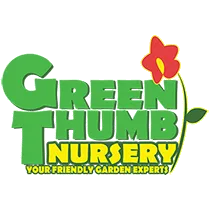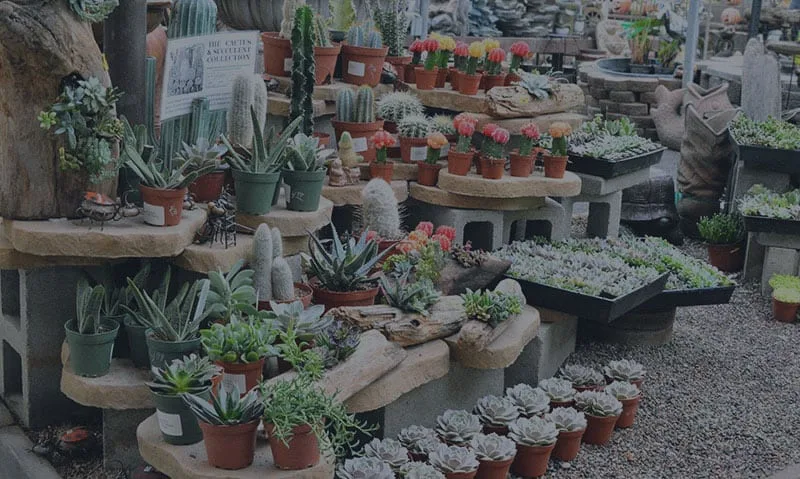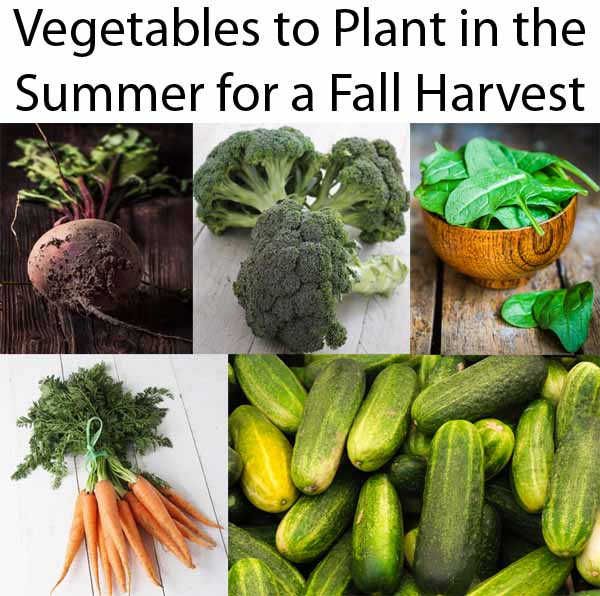Newsletter Articles
Vegetables to Plant in the Summer for a Fall Harvest
Written by Kelsey W.
There’s nothing more exciting than seeing a fruit or vegetable starting to grow on one of the plants in your garden. It may take weeks or even months to see your plants give you something delicious, and the eventual reward is always worth the time you spend caring for the plant.
Fortunately, the fun you have growing your vegetables doesn’t need to end with the close of the summer. Even if temperatures dip unseasonably low in the autumn, you can still enjoy some late harvests well into the end of the year.
The key is getting those plants started in the summer, ensuring that they bear fruit and vegetables later in the year. Just like the flowering plants you might place around your home, your vegetable garden can offer you yields throughout the year, too.
Here are some of the late-summer plants for your garden that will keep your Southern California home producing delicious food well into the fall.
Let’s Get the Broccoli Started
Broccoli is a terrifically fun and relatively easy plant to grow, and when you plant it in the summer, you’ll enjoy a harvest by the autumn. The best time to put broccoli in the ground is in July and August in an area with well-drained soil.
Broccoli can actually withstand a lot of sun, but a little shade is never a bad thing in the middle of a Southern California summer. Just take note of how the pattern of the sun changes throughout the late summer and fall. Your broccoli might not get enough sun if it’s on a north-facing wall in the autumn.
If you live in a pocket of Southern California where the temperatures dip a little earlier than other places, you can always substitute cabbage for your autumn harvest. Cabbage is a little hardier than broccoli when it comes to cooler temperatures.
You can expect a harvest from 70 to 95 days after you put your little plants into the ground. Broccoli loves plant food and will appreciate some fertilized soil or compost mixed into the ground or pot. Yes, broccoli is an excellent option when you don’t have a yard and want a fall container garden.
Add Some Spinach to Your Fall Harvest
Just like broccoli, spinach is a powerhouse of nutrition, and it grows just as well in the fall as broccoli. In Southern California, you can actually get spinach to grow well into the winter, especially in areas where the temperature doesn’t reach freezing or only experiences a light frost.
You can plant spinach from seeds and expect a harvest in about 45 to 50 days. If you get a late start planting your spinach, soaking the seeds and letting them dry out for a day before putting them in the ground can accelerate germination to about five days instead of the traditional ten.
You’ll know your spinach is ready to harvest when the rosette has at least five or six leaves. Spinach does love the sun, so make sure you plant the seeds or little seedlings in a place where the plants will continue to receive a lot of sunlight throughout the autumn.
You can also ensure continuous harvests throughout the fall by harvesting no more than one-third of the overall plant each time you visit your garden. The leaves will grow back in less than a week as long as you don’t take too many leaves away at a time.
Beets Love a Fall Harvest and Bad Gardeners
If you’re new to gardening and want a vegetable that’s super easy to grow, the beet is your ideal candidate. Not only are beets excellent vegetables for the fall (or spring) harvest, but they’re also pretty resistant to disease and pests.
As long as you give beets some good quality soil and place them in the best conditions for sunlight and shade, you really only need to remember to water them on occasion for a great fall harvest. Give them a big load of fertilizer when you put them in the ground, but just focus on water in the following months.
The trickiest part of growing beets is finding the right spot in your yard for the best quality vegetables. Once you find that spot, you’re almost assured of a great crop. The roots (the beets) like a lot of sun, but if you also enjoy the beet greens (what’s above the ground), they’ll need just a little shade, too.
Try to avoid a north-facing wall for your beets; they probably won’t get enough sunlight on that wall, especially as the sun starts to migrate lower in the sky. When in doubt, always choose the sunniest spot in your lawn for your beets, and make sure they don’t get too dry when it’s hot.
Plant Carrots When You’re Late to the Game
Okay, let’s say you’ve been really busy all summer, and you haven’t had a chance to visit your garden for new planting. The best option for some fall fun is a bed of carrots. You can plant carrots as late as September, and you might even have better results when you wait until really late in the season.
If you’re trying to grow carrots from seeds, you’ll actually have the easiest time germinating them when temperatures are below 85 or 90 degrees. You can reduce the time it takes to get carrots by planting seedlings instead, and your time to harvest can go down to less than 60 days.
Your carrots will be ready to harvest after about 70 to 80 days when you see the roots reach a diameter of about 1 to 1.5 inches. Note that your carrots won’t necessarily pop out of the ground when they’re ready to harvest. It’s important to pay attention to the thickness of their roots to determine when they’re ready to harvest.
Get a Second Harvest of Cucumbers
Cucumbers aren’t the first vegetable that might come to mind when you think about fall harvests, but they will grow well into the fall, especially in Southern California. They’re commonly grown throughout the summer for delicious summertime yields, but you can also enjoy a second harvest in the fall with another batch.
You’ll need to remove the cucumber plants you planted in the summer and get some new seedlings into the beds; get them into the ground sometime in July for a fall harvest. You can probably push that date to August in Southern California, since we tend to have warm weather well into the fall.
Cucumbers grow at their fastest rate when the weather is warm, which means they do take a little longer to reach their full potential when temperatures start to get chillier, but it still shouldn’t take any longer than about seventy days for your cucumbers to reach their fullest and most delicious state.
If you’re feeling a little adventurous, try growing your cucumbers on a trellis rather than along the ground. Growing them on a trellis can actually yield better results, as well as save some room in your garden for other plants that require a lot of ground space.
Time Your Autumn Harvests for a Bountiful Fall
As you plan your summer planting activities, you can take note of the time it should take each plant to reach maturity so you can enjoy having multiple plants producing edible vegetables at the same time.
If you’re keen on having salads from your own garden, you can time your spinach, cabbage, and carrots for simultaneous harvests, which means an awesome salad for your dinner table.
And here’s a tip: you can actually score a second harvest from your tomatoes if you continue to care for them throughout the summer and into the fall.
Not only can you enjoy a salad with spinach and carrots, but you can add late-season or second-harvest tomatoes to your meal, too!
Celebrate a Bountiful Harvest with Help from Green Thumb Nursery
Learn how to create a beautiful and happy garden outside your Southern Californian home, whether you have a line of tomato plants in pots on your balcony or a bed of cucumbers climbing up the trellis in your backyard. The enthusiastic experts at Green Thumb Nursery are always around to help you get started on an amazing garden for your home.
Do you like what you see? Sign up for our weekly newsletter to get content like this every week!


